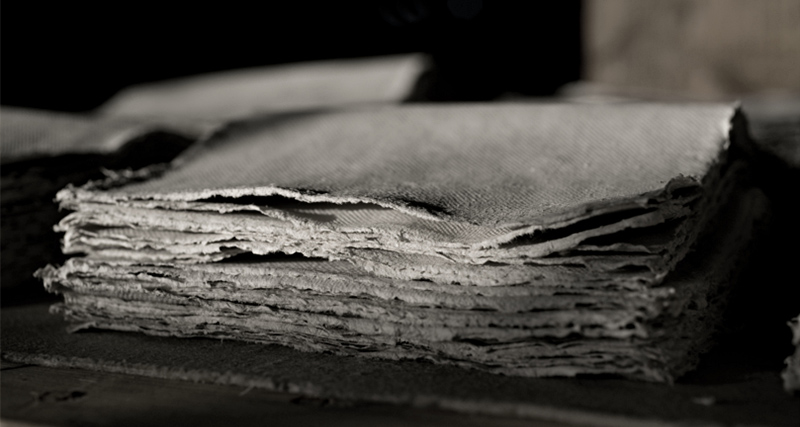
July 10 2017
From the founding of the first paper mill to the rags war
Although the art of papermaking had been well known in the Italian State of Lucca since the 13th century, over the next 300 years that art gradually disappeared. There were numerous vain attempts to re-establish the tradition, like those of the Serconforti and Turchi families, but only in the middle of the 1500s was the first real paper mill founded in the State of Lucca.
In 1549 the printer Vincenzo Busdraghi requested and obtained a printing monopoly for his printing works. He reaped no benefits from this for more than a decade, however, until he formed a company with two cousins and decided to buy and renovate an old mill in Villa Basilica.
Busdraghi managed to obtain tax exemption from the local Revenue Offices, but financial issues remained a concern. The Guinigi and Turchi families joined the company at the outset but after two difficult years, they withdrew and ownership passed into the hands of the investor Alessandro Buonvisi who obtained an extension of the privileges attached to the mill. The status of the Buonvisi family in Lucca ensured that the paper mill could overcome various obstacles without succumbing to the fate of previous ventures: still today, the paper mill at Villa Basilica is remembered as “the Buonvisi paper mill”.
In the last decade of the 16th century, the business had to deal with the serious problem of finding raw materials. Fortunately, the intervention of the State in the rag trade favored the consolidation of papermaking operations. However, a period of expansion followed, which led to more factories and greater production capacity and this brought an end to the Buonvisi family’s long-held monopoly. But despite severe new measures taken by the State, fraud in the rags market remained a serious problem.
The irreconcilable interests of the rag merchants – who wanted to export their product from the port of Viareggio as a speculative venture – and the paper mill entrepreneurs – who needed rags for their businesses – led to the so-called Rags War. In 1696 an attempt was made to end the conflict through an agreement between the two parties. This, however, proved insufficient to meet the needs of the paper mills. So guards were introduced to accompany rags consignments in order to bring strict control to the export of the raw materials. In the end, the industry’s interests prevailed over those of the merchants and licenses for collecting rags began to be registered. This allowed a census of factories to evaluate the production capacity of each facility, giving an overall picture of the papermaking industry.
Unfortunately for Lucca’s paper mills, the end of the 18th century was a period of confusion, not only from the point of view of legislation but also as far as running the factories was concerned. With the rapid increase in the number of factories and the urgent problem of the supply of raw materials, some (such as Buonvisi’s) closed down for renovation and improvement while others closed permanently.